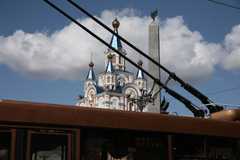Khabarovsk: new frontiers / Khabarovsk
On the edge
Five years ago, one of Khabarovsk’s main exports was its women, who went to work as prostitutes in Japan. Today, the Russian city is booming, thanks to its natural resources. But can this city, closer to Beijing than Moscow, keep the revival going?
Dmitry Nikolaevich stands in front of a rusty kiosk overflowing with the kind of pointy shoes so popular in Russia. He wears a broad smile above his massive folded arms. When he hears that his guest is American, his grin grows even wider. “Come in,” he jests in broken Russian, “and bring your dollars with you!” Dmitry Nikolaevich is no ordinary Russian salesman. In fact, his real name is probably not Dmitry Nikolaevich and he is not Russian at all. He is just one of the thousands of Chinese labourers and businessmen flocking to the economic boomtown of Khabarovsk in the Russian Far East, in search of higher wages and a chance, as he puts it, for an adventure.
Once the manufacturing giant of the Soviet Far East, Khabarovsk succumbed to the same scourge of violence and decay in the 1990s that plagued Russia in general, and the Far East in particular. Factories producing naval vessels were shuttered; anyone who had the means sent their children abroad to escape the mafia-driven violence and skilled labour all but disappeared. “We have lost almost all of the specialists who used to work in the plants and factories,” says Igor Naiman, a television producer who has covered the region’s economy for nearly two decades. “In the past 15 years there was no serious need for them. All we did during that period was gambling, crime wars and stealing – but no ordinary work in the factories.”
Khabarovsk won a longstanding battle over rival port Vladivostok in 2002 to become capital of the massive Far Eastern Federal District. Now, with Russia reconsidering the strategic options opened by an energy-starved China, Khabarovsk is being positioned as the economic command centre of the region. Closer to Beijing than Moscow by a factor of four, and part of China until the mid-19th century, the vast Khabarovsk Territory is rich in natural resources from coal and gold to old-growth timber. It sprawls across a staggering 491,000 sq km, accounting for roughly 4.5 per cent of Russia’s total land mass. That’s about three times the size of the UK.
With its new title came administrative control over eight additional federal areas, including the massive natural gas deposits of Sakhalin and the strategic port of Vladivostok, home of the Eastern Fleet. More importantly, it brought the kind of material wealth that is virtually unknown so far away from the glittering streets of European Russia. “I saw a Bentley the other day with my own eyes,” says Naiman. “Can you believe it?”
As recently as five years ago, one of the region’s most notorious exports was young women, driven to the sex trade in Tokyo while seeking escape from economic ruin. Today, a quick stroll through a newly built shopping centre owned by the ironically named People’s Company brings the influx of new wealth into sharp relief. Women cross marble floors on impossibly high-heeled stilettos to ogle windows displaying high-end western goods.
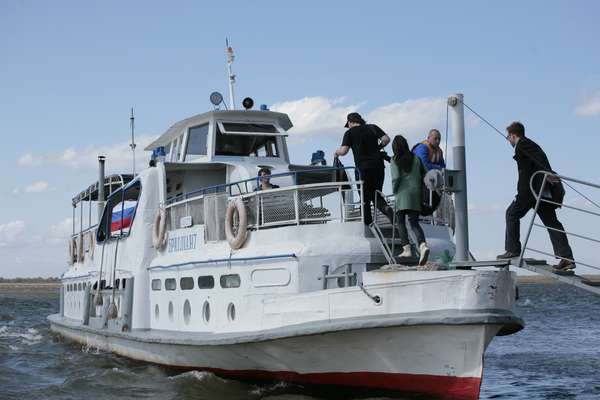
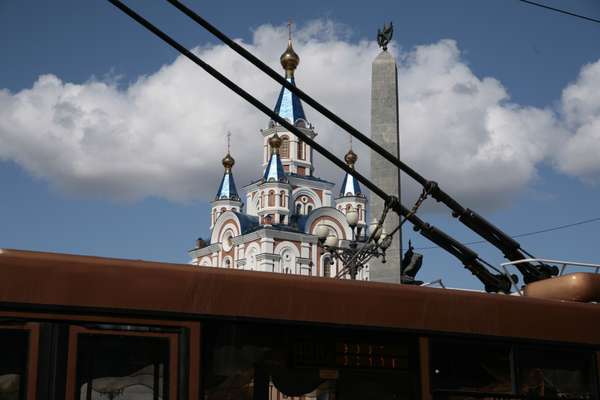

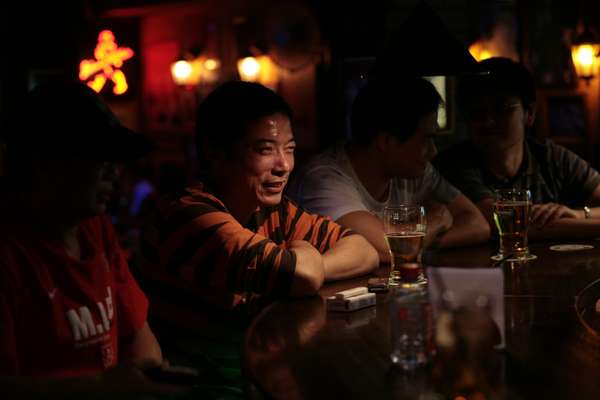


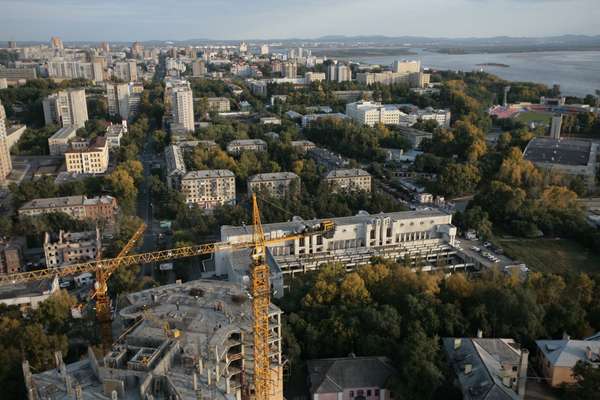

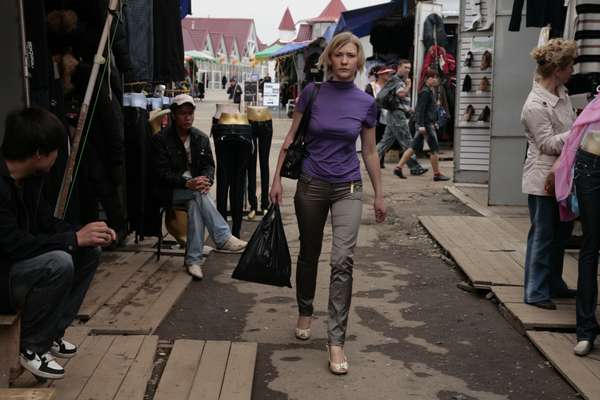
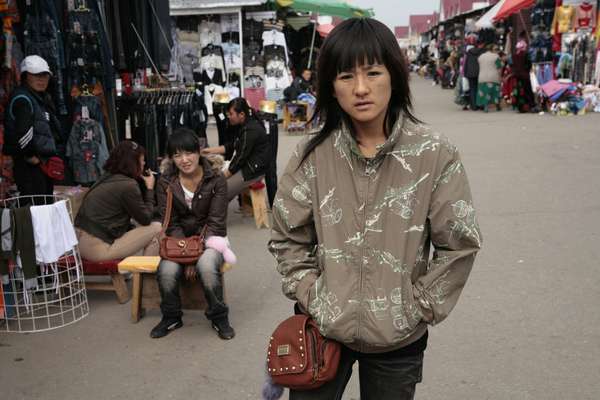
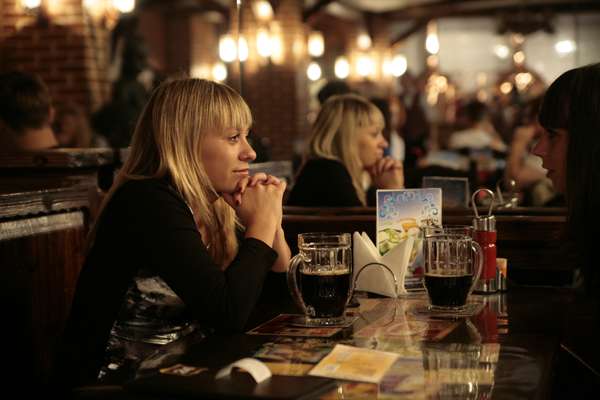
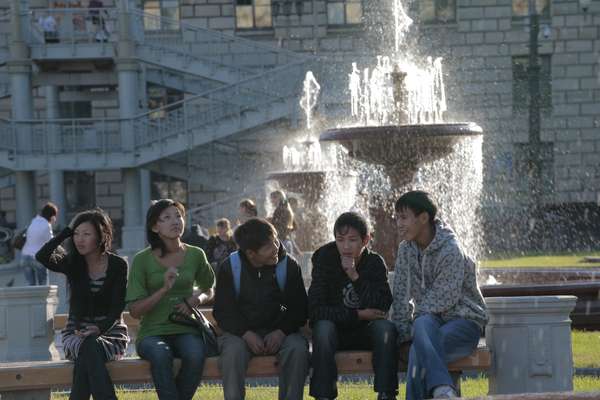
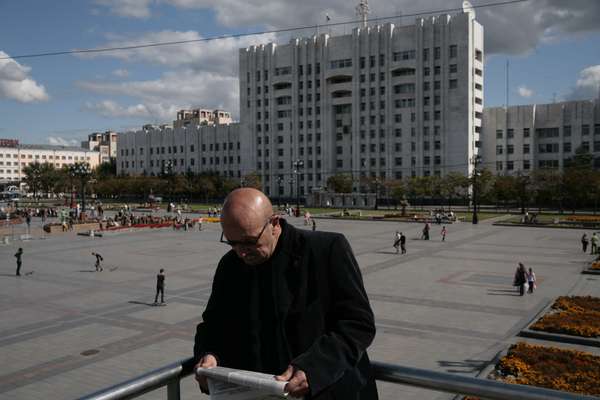
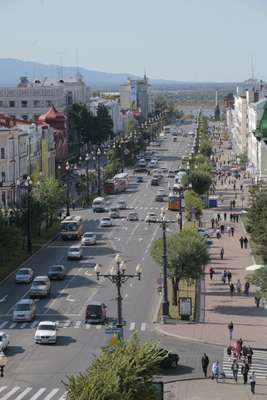


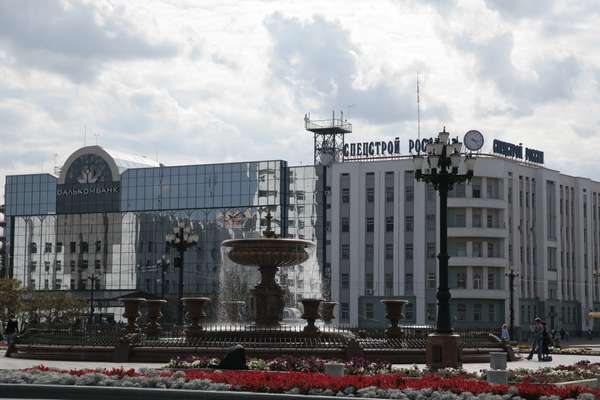
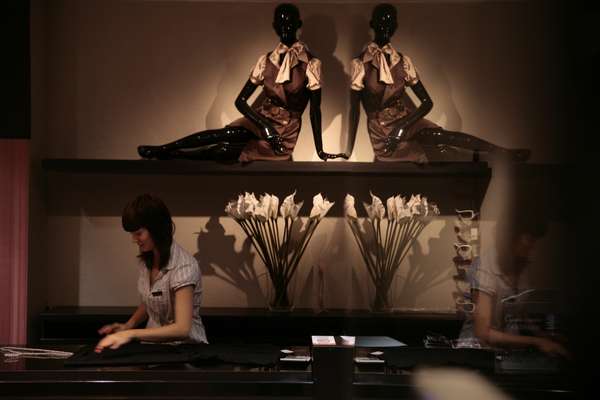
In a moment reminiscent of Pretty Woman, but with the western journalist transformed into the waifish outcast, a disinterested saleswoman looks me up and down before stating simply that their watches are very expensive. How expensive? “$70,000 for the most expensive,” she mumbles, then looks away.
Foreign direct investment (FDI) in Khabarovsk Territory has more than tripled since 2004, from €296m to €780m in 2007. Metallurgy and transportation – driven by the construction of Transneft’s massive East Siberia-Pacific Ocean Oil Pipeline (VSTO), which is set to deliver Siberian oil to China and Japan – account for more than 80 per cent of foreign investment by sector. Still, while the number of high-rise apartments and boutique shops sprouting up suggest another type of foreign investment, the underlying trends can be deceiving. Three of the largest investors by country are the Bahamas, Austria and Cyprus, all notorious tax havens for wealthy Russians. Combined, they account for 56 per cent of FDI in 2007, suggesting that the actual scale of foreign interest is far lower than touted.
“It’s likely VSTO itself will only have a limited impact on the regional development of East Siberia and the Russian Far East,” says Matt Stone, a Marshall Scholar at Oxford University and an expert on the pipeline. “Post-construction, barring a significant expansion of oil production in the region, these industries may fall back into a semi-comatose state.” Regional elites are banking on the city’s future as a transport and economic hub. In 2009, construction on the largest shipping centre in the region is set to begin in the northern suburbs. Logistics is fast becoming the preferred course of study for business students here.
Still, despite serious efforts on the part of the local and regional governments to encourage foreign trade and investment, a plodding Soviet-era mentality continues to permeate local officialdom. The city’s Foreign Investment Promotion Agency, tasked with facilitating trade and foreign investment in the region, refused to grant an interview for this article. “You must provide the mayor’s office in advance with a detailed list of questions and only once it is approved may we speak with you,” says assistant Tatyana Ivanova. Would follow-ups to the agreed upon questions be allowed? “No. Those would need to be approved ahead of time.”
At trendy local club Chocolate Bar, in-between spoonfuls of miso with fresh salmon and sips of Jameson whiskey, Alexander Kim, director of local television station Dal-TV, rattles off the names of his favourite bands. “What do you think about Blonde Redhead,” he asks. “I think they’re the best, but I honestly thought they were British, not American.” “Yeah,” chimes in 20-year-old Masha Netrebenko, “and I thought Sonic Youth were British too.”
While the government and local businesspeople set their sights squarely on the east, the city’s sizeable young population is decidedly western in its orientation. As the setting sun casts an orange glow across a recently renovated series of ponds in the city centre, the sound of thumping bass drowns out the chirping of birds. Nearly 200 young people, sporting hip-hop fashion straight out of MTV, have assembled for an impromptu break-dancing competition.
Bodies whiz and whirl atop a sheet of plastic, contorting into peculiar shapes while a delighted throng of teenagers look on. Vladimir Gushin, 29, likes to organise an outdoor dance party at least once a week in the summer, he tells me. “It’s good to do this whenever we can,” he says, standing by a mobile DJ station. “Soon the summer will be over and then, of course, it’s impossible.” Although the influence of up to one million Chinese businessmen, who regularly come here, not to mention the labourers from China’s poorer provinces, seems to have little impact on popular culture, it is written across the face of the city.
Chinese and Korean restaurants are a fixture on the broad Soviet-era boulevards, as are the endless commercial trucks marked with Chinese characters. On Karl Marx Street, a brand new car bought abroad still sports the Chinese lettering on its windshield. China is by far the region’s largest trade partner, accounting for 42 per cent on exports and 53 per cent of imports in the first quarter of 2008. In come finished products and cheap consumer goods; out goes timber from the region’s pristine forests and oil.
There is also the environmental toll. On November 13, 2005, an explosion at a factory in Jilin sent a slick of toxic benzene 90 miles long coursing up the Amur river through Khabarovsk. For days, the city’s water supply was cut off and residents were forced to survive on emergency water rations. The influx of Chinese trade and labour, together with the environmental question, has only served to exacerbate a sense of fear among locals that their neighbours want more than money. Anxiety about a Chinese land grab in the Far East was compounded when Tambov and half of the Bolshoi Ussuriisk islands, both visible from the shores of Khabarovsk, were handed over to the Chinese in August, following a lengthy border dispute. Few appear to understand why the deal was made, although many expressed that it was merely the first step in a full-scale takeover.
“This discourse of Chinese invasion is very important... but it’s an absolute myth,” says Alexey Sidorenko, an expert on Russia’s regions at the Carnegie Center for International Peace in Moscow. “Of course this is connected to the historical memory of the conflict in the 1970s with China and the constant propaganda against Chinese and against any foreigners.” Still, on Bolshoi Ussuriisk itself, an impoverished sliver of land marked by crumbling shacks and a seemingly abandoned shipyard, the locals seemed less concerned than their neighbours on the mainland.
“I heard that they’re going to build a market over there,” says 22-year-old Oksana, standing on a rutted dirt road outside a general store. “Of course, since they’re Chinese, you know it’s going to be a lot cheaper, so we’ll probably go over there to do our shopping.”
Jet stream: more boom towns
If Khabarovsk is the nerve centre of the Russian Far East, than Komsomolsk-on-Amur is the muscle. Following the decay of the 1990s, Komsomolsk is once again re-emerging as a manufacturing powerhouse. The second largest city in Khabarovsk State, this industrial centre on the banks of the Amur river makes everything from fighter jets to ships to the processed metals behind the VSTO pipeline. In addition to parts for the Superjet, Russia’s first post-Soviet foray into civilian aviation, the Yuri Gagarin aircraft factory is producing next-generation fighter jets for Sukhoi. Working under the auspices of the secretive Future Air Complex for Tactical Air Forces programme, the factory is key to the modernisation of the Russian Air Force. Still, as it is one of the most remote cities in Russia’s forbidding eastern reaches, the economic benefits of the boom in manufacturing have yet to trickle down to the population. “There is nothing in Komsomolsk,” says 30-year-old Kiril Khanenkov, a fashion photographer in Khabarovsk and a native of Komsomolsk. “People there have no opportunities. Many of them turn to alcohol or even narcotics just to have something to do.”
Strongest links
Trade and investment between Japan – one of the earliest players into the region after the collapse of the USSR – and Khabarovsk remain extremely strong (Tokyo is only 1,535km away compared to Moscow, 6,223km). Since 1998, only the US, Germany and China can boast greater direct investment in the region. There is a sense, however, that the centre of gravity may be shifting from Japan towards China and South Korea.
This year, for the first time, exports to South Korea have exceeded those to Japan. Japan is still the main source for goods imported to Khabarovsk – 19 per cent, up from 17 per cent in 2007 compared to South Korea’s 6 per cent. Japan’s links with Khabarovsk look set to dwindle further when the VSTO pipeline is finished. It had called for the pipeline to stretch to the Pacific. But in the end only a secondary branch is planned to reach Japan and it is not clear how much oil will really flow through it. “Conventional wisdom is that there is not enough proven reserves of oil in East Siberia to justify VSTO’s second leg and the pipeline will by default become a Russia-China pipeline only,” says expert Matt Stone.
Trade and investment between Japan – one of the earliest players into the region after the collapse of the USSR – and Khabarovsk remain extremely strong (Tokyo is only 1,535km away compared to Moscow, 6,223km). Since 1998, only the US, Germany and China can boast greater direct investment in the region. There is a sense, however, that the centre of gravity may be shifting from Japan towards China and South Korea.
This year, for the first time, exports to South Korea have exceeded those to Japan. Japan is still the main source for goods imported to Khabarovsk – 19 per cent, up from 17 per cent in 2007 compared to South Korea’s 6 per cent. Japan’s links with Khabarovsk look set to dwindle further when the VSTO pipeline is finished. It had called for the pipeline to stretch to the Pacific. But in the end only a secondary branch is planned to reach Japan and it is not clear how much oil will really flow through it. “Conventional wisdom is that there is not enough proven reserves of oil in East Siberia to justify VSTO’s second leg and the pipeline will by default become a Russia-China pipeline only,” says expert Matt Stone.
Five things Khabarovsk needs to do to stay ahead
01 Diversify – Once VSTO construction is finished, Khabarovsk will have to find another way to drive its economy.
02 Tech-up – High-speed home internet still costs nearly $100 per month, too much even for the growing middle class.
03 Luxury – A good international hotel or two – to replace the city’s Soviet-era relics – would entice more visitors.
04 Infrastructure – Roads need to be improved to boost business around the region.
05 Support the arts – A trademark arts event – like Vladivostok’s International Film Festival – would help establish the city’s credentials as an arts centre.

